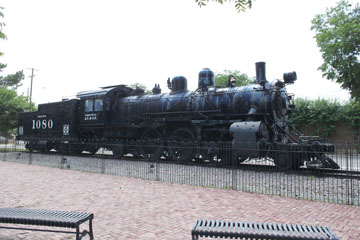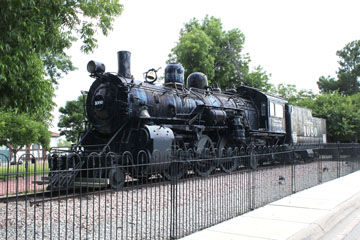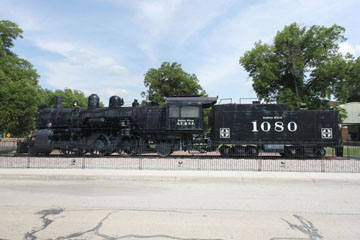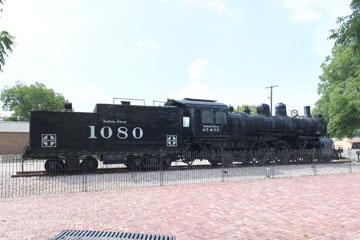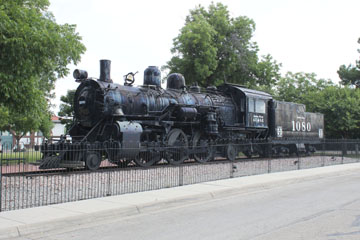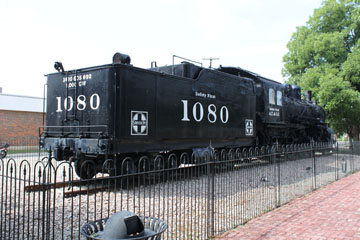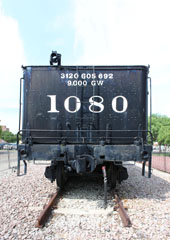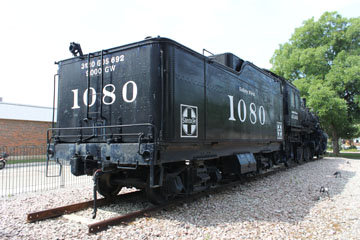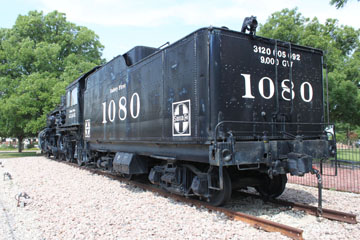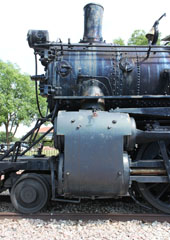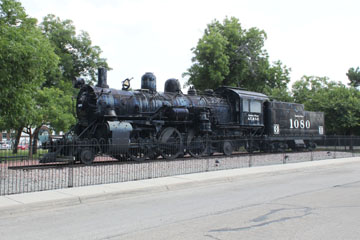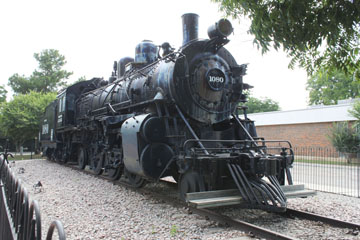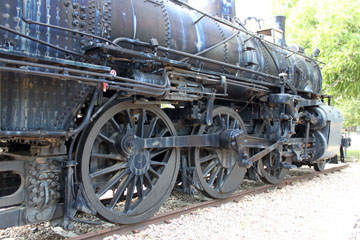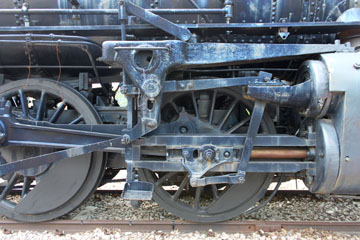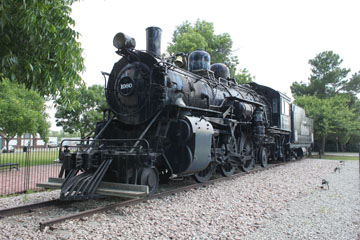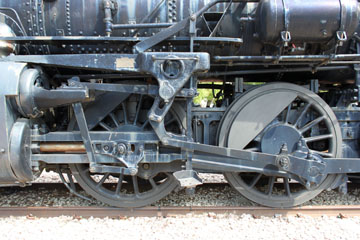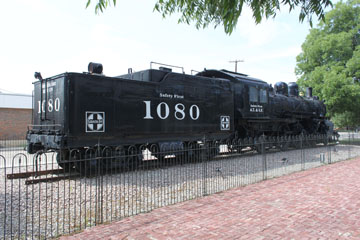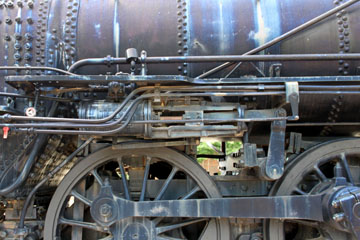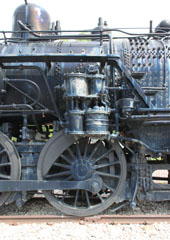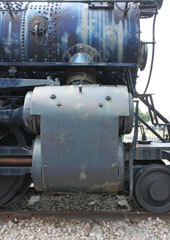

Outshopped in 1902, #1080 is one of one hundred and three 1050 Class Prairie type (2-6-2) locomotives built for the AT&SF by Baldwin between 1902 and 1903 (#1050-#1152) as four cylinder Vauclain compounds with 17" x 28" high pressure and 28" x 28" low pressure cylinders. The engine consisted of two pistons mounted in line and moving in parallel to drive a common crosshead, one on each side of the locomotive. The valve was on the inside, controlled by Stephenson valve gear.
The locomotive weighed 190,000 lbs, 135,000 lbs on its 69” drivers. The engine wheelbase is 32’ 2” and the driver wheelbase 13’ 8”. With a 53.5 sq ft grate and 195 sq ft firebox, total heating surface was 3,738 sq ft. Operating at a boiler pressure of 200 psi, it delivered 29,134 lbs tractive effort. The tender weighed 110,790 lbs light and had a capacity of 6,000 gallons of water and 10 tons of coal.
Lower fuel and water consumption was the main advantage claimed for compounding, but Vauclains produced uneven forces and excess wear at the crosshead, which increased maintenance costs and largely offset any fuel economies. The complex valve assembly and the starter valve also increased maintenance costs.
Heating surface was unchanged but the rebuild delivered an impressive 30% increase in tractive effort to 38,097 lbs. A slightly heavier tender was mated with the engine weighing 112,610 lbs with an additional 1,000 gallon water capacity.
#1080 was donated to the City of Brownwood, TX, by Fred B. Gurley, president of the Santa Fe System, during a Santa Fe Appreciation Day sponsored by the Brownwood Chamber of Commerce on 29th March 1954. On 29th July 1954, the Santa Fe moved the locomotive to Margaret & Stuart Colemen Park.
The complex valve assembly and the starter valve, which allowed admission of high pressure steam directly to the low pressure cylinder, also increased maintenance costs. By the turn of the century, many US railroads were abandoning compounds and converting those they owned to single-expansion locomotives.
The AT&SF subsequently simpled all its 1050s between 1910 and 1922 with 23½" x 28" cylinders and Walschaert valve gear. The engine weight then rose to 210,190 lbs, 141,690 lbs on the drivers.
At that time, #1080 was named "The Fred Gurley" and the name was painted on the side of the tender.
Forty-five years later, when it was repainted and moved to the front of the Santa Fe Depot and Harvey House on 30th March 1999, the name was removed.


